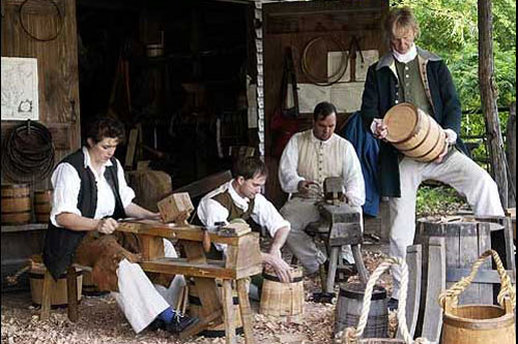SKILLS
These are but a few skills that are worthy of considering for your gainful knowledge, We have picked these more on the fact of availability and public need for providing an income to the craftsman. There are many skills that are worth pursuing for your own knowledge and many times the practicing of one will lead to the knowledge of another.
Tanning and leather work

Unworked hides become very stiff and hard when they dry and then begin to rot when they are exposed to heat and moisture. A properly tanned hide will be made soft and playable and able to hold up to exposure for a much longer time with out degrading. Learning to tan skins and make leather can turn out to be a very lucrative skill. Chances are your sitting on a leather chair and if you look around you right now you can probably spot 5 other products made of leather. The most valuable and popular leather product is probably the belt, in a way you could say that the belt helped to civilize mankind. Leather sits quietly in our lives performing its durable job, strong and sturdy ready for the next task, but leather isn't always quiet, sometimes its loud and flashy and says "HEY look at me, I'm here" to the pleasing presence of on lookers. Man has used leather for many functions since our first hunt, from shoes and blankets to holsters and purses, we made rugs and shelters and one of the first water flasks (after the dried gourds). Synthetics have come a long way but there's nothing like real leather, the feel, the smell, the quality. Come hunting season you'll have more work then you know what to do with as all of your friends will want their prize bucks and bear skins tanned out to hang on their wall, this can fetch from $150 to $500 per piece. With a little investment of time and money you can learn to be a leather worker and Tanner. A good place to start is Tandy Leather.. .or go to our >LIBRARY< and down load some simple starter PDF's for beginning tanning in the skills section. There are many different methods of tanning, some are natural processes and some aren't, so you'll need to look and figure out whats best for you.
Links and resources.
-The History of leather -Making shoes
Links and resources.
-The History of leather -Making shoes
THE NO BRAINER METHODE: This is a great beginners video to learn the basic process.
Blacksmithing
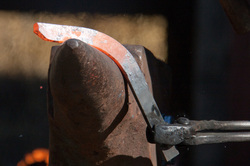
Through out history Blacksmiths have been there to help join worlds and tare them apart, from Religious relics to weapons of destruction and everything in between. Blacksmiths take raw pieces of wrought iron and pound them into life's needs and desires. Just as welding courses are offered in high school programs today so was Blacksmithing at the turn of the 19th century. This is an ancient art that really has no beginning per-say. In its infancy people molded and banged out softer metals like gold and silver and bronze and it eventually became what it is today, which is a dying art form, enter CNC Machines, high tech lasers and what not, the industrial need for blacksmiths has fallen to the wayside except for small things like custom parts and braces that aren't available any more. Black smiths today make a living by pounding out individual pieces for custom homes or decorative decor and this is where you will find your living in this lost art. From fine hinges and fancy gates or custom knives and furniture to high end pieces of art, This is all the well anyway, who wants to stand over a hot furnace pounding out buckets all day, the skill has taken the side of full creativity and artisan and the right pieces will find themselves in high demand. We still connect with iron in its rawest forms, there is just something wholesome and honest about it and the art still demands respect... A small bellow can be set up right outside in your back yard. If you hear the ring of the hammer striking the anvil calling your name, then you can go here to find out more about blacksmithing.
Artist-Blacksmith Association of North America
Crimp,Cramp,smash,bash and forge your little hearts out..
Links and resources
The History of Blacksmithing. Britain's Longest-serving Blacksmith (video) Early Iron (video) Brooklyn Blacksmithing (video)
Artist-Blacksmith Association of North America
Crimp,Cramp,smash,bash and forge your little hearts out..
Links and resources
The History of Blacksmithing. Britain's Longest-serving Blacksmith (video) Early Iron (video) Brooklyn Blacksmithing (video)
Wood working

They say that farming is the oldest profession known to man but I think I would have to go with woodworker, because someone had to make the tools to farm with. Wood is everywhere around us, some of it is still growing and some of it is holding our roof up or waiting to be the place that we sit or holding up our lamps or storing our clothes until we need them. What is your computer sitting on? Wood plays a major roll in our day to day lives and has helped mankind build societies and empires, go to war and build peace, wood is unbiased and awaits our desires for it's duty. There are hundreds of types of different woods and each one is better for something then the next, Your journey will start here, you need to know the different types of woods that are available from hard woods to soft woods, from dense to pores, hold a piece of balsa in one hand and a piece of oak in the other and then think about everything in between. There is a family of wood that is known as Iron wood, you can do the math on that one. Some woods are used for their strength and others for their beauty. Wood is both fascinating and amazing and one of the best ways to learn your woods is by carving them, get to know their grains and strengths and weaknesses.. Udemy< offers a really good beginners course. We will never stop needing products made from wood or the people that know how to make them. Wood is spiritual and it will find you. Go to Max's wood working to get your own library of over 16,000 projects , prints and lessons. (Click here).
Links and resources
The woodwrights shop American Woodworker Wood talk Gallery
Links and resources
The woodwrights shop American Woodworker Wood talk Gallery
Soap making
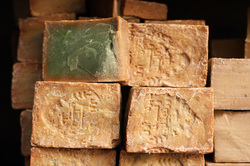
Splish splash I was taking a bath. What a funked up world it would be without soap, could you imagine, first and foremost other then getting our whites white and brights bright soaps biggest achievement has probably bean that against disease and sickness, now contrary to popular believe soap doesn't clean things, it lubricates them. When you come in from a hard days work and you're all greasy and grimy and you jump in the shower and lather up, yes the dirt is gone from your body but it didn't magically disappear into another dimension, the soap you used saturated into the dirt and freed it from your skin and allowed it run off and down the drain. Bleaches and detergents clean things by breaking them down chemically and dissolving them back to basic carbons and molecules, not something you would want to do to your skin. Being a lubricator soaps bases are usually made from some sort of oil, whether it be fats from animals or oil extracts from plants combined with an alkali and exfoliators such as sand or ash to help scrub the surface. Now for the truth about the lye. Lye is what is known as a caustic base, this means it is highly corrosive and it will eat through metal. Its "fancypants" name is sodium hydroxide (NaOH) and by itself it is dangerous and should be handled with care and diligence. Once heated and added to the fats or oils in the soap process its structure changes and mellows out becoming a lite detergent. You will see Lye free products on the shelves usually called moisture bars, but they will not be called soap because the FDA forbids any product not containing lye (alkali) to be called soap. Once you have combined your oils, fats and alkalies you can then start to hand craft your soaps by adding other things to it such as scents, pigments, milks such as goat or sheep's that are known to help with moisturizing. Different glyserin products are toyed with as well as different exotic clays. There are many books written on this subject as well we have basic information on soap making available in our "Library"<. under skills.
Handcrafted Soap Guild HISTORY and TECHNIQUES European Soap Alliance
Handcrafted Soap Guild HISTORY and TECHNIQUES European Soap Alliance
Candle making
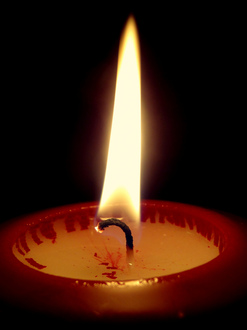
A person who dealt in candles both making and selling was known as a Chandler. The first known candles appeared in China around 200 B.C., they were manly made from whale fat with rice paper wicks and made necessity of caring raw fuel around more convenient. Candles can be made from almost anything that will remain solid at room temperature and then evaporate or liquidize when heated, (I wonder if anyone has ever made an ice candle?) Wax has far and beyond become the main stay for this process, but it has not always been the staple for candle making. Fats (known as Tallow) and oils that would harden were used first long before beeswax was used. In India they would boil cinnamon for the oils, these were probably the first scented candles. Paraffin wax is the mane wax used today for most store bought candles. Paraffin is a byproduct of the petroleum process and more widely available and cheaper then bees and soy waxes. If you're just interested in making creatively colored and shaped candles then paraffin is the way to go. if you're looking for a more traditional route then you're going to have to learn how to keep bees or press plants to extract their oils. Candles made from Tallow (animal fat, usually beef) is a skill that is good to know for a chandler, but the products are not desirable by consumers. Soy and bees wax are more the rage presently. P.s. candles made of Tallow tend have a funky odor associated with them. The fact of the matter is that electricity and light bulbs have been around for over a hundred years and candles and the people that love them are still going strong, in the U.S. alone it is a 2 billion dollar industry and 7 out of every 10 households have and use candles on a regular bases. I don't expect chandlering to be a lost art anytime soon.
> The History of candles. > National Candle Association
> The History of candles. > National Candle Association
Jewelry
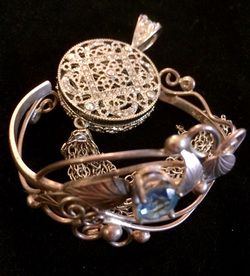
There are many ways to make jewelry from beads and sticks, but if you won't to take on this skill seriously you will need to learn the art silversmithing. Jewelry is just that,a Jewel, usually a precious stone placed in a setting, the setting's are usually made from gold or silver. Other adornments qualify as jewelry as well and they are also usually gold and silver formed into chains and rings and pendants with carvings and designs meant to catch the eye of passers by. Many stories of our history revolve around folklore of some sort of a hand made piece of metal or mined stone. Silver tends to be a softer metal that is pliable and melts at rather low temperatures compared to other metals such iron ore, 1762 degrees Fahrenheit to be exact, steel is in and around the 2500 degree mark. So you don't need a blast furnace to melt it but you will need special equipment to achieve these temperatures and a safe place to do it. Like blacksmithing though silver can be heated and formed into pieces with a hammer and other tools, you don't need a furnace, you can just buy smaller pieces and heat them with a small torch until they are soft and form them to your liking. A lot of community collages offer these courses as well as other private teachers. This is and has been a lucrative way for many and will continue to be for some time. Paul Revere was a silversmith. Silver allows for a true expression of ones own art and creativity in a fairly permanent form that will last for many generations and possibly more. Find the basics on Silversmithing in our PDF >LIBRARY. A good place to jump off into jewelry and crafting may be Name Jewelry, Create personalized wire jewelry for people at craft shows and open markets, this is one course we found that teaches the basics. (Wire Name Jewelry). Flat wear Jewelry is fun and creative too, here are some examples (flatwear). Start learning here. (Flat wear Jewelry.)
jew·el·ry ˈjo͞o(ə)lrē/ noun 1. personal ornaments, such as necklaces, rings, or bracelets, that are typically made from or contain jewels and precious metal.
Links and resources.
S.A.S Find a Class near you Back yard metal casting About Silversmithing
jew·el·ry ˈjo͞o(ə)lrē/ noun 1. personal ornaments, such as necklaces, rings, or bracelets, that are typically made from or contain jewels and precious metal.
Links and resources.
S.A.S Find a Class near you Back yard metal casting About Silversmithing
Butchering
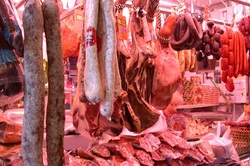
If your daughter isn't going to marry a Doctor then she better marry the Butcher. This ancient art has always been one of necessity and creativity. Just learning all of the parts and pieces and cuts alone is a trade of many years of learning, but then you go on to learn about blends and bacteria's and how to rot meat in a healthy way for preservation and nutrition. Someone that blends and grinds meats to make sausage is known as a "charcutier". Some meats are dried, some are cooked and some are both, this noble art has made mans journey through life much more comfortable and even desirable. Good friends, good meat and good wine are the recipe to a good time. Modern day packing and processing plants have taken the art out the common mans hands slowly but surely for the last 100 years and it is slowly decaying to the layman's knowledge of things. Everyone should know the basic cuts of meat. The busiest time of year for a butcher is hunting season and a well known butcher can make a lot of money in this short period of time, generally towards the end of fall. Some butchers charge money as well as a percentage of the game. Having these skills and the ability to do it quickly and well can increase your lifestyle immeasurably. The best thing to do is find someone that already has the skills and try to learn from them, even if you worked for free for a season you would walk away with a lifetime skill that will pay for itself over and over again, and i'm sure a back strap or two.
learn the >Basic cuts Watch a great video on the wholes of a pig >Video
learn the >Basic cuts Watch a great video on the wholes of a pig >Video
Find PDF's on these skills and more in the OFFGRIDDING free >library under the skills section.
These are but a few skills that are available to be learned to provide a living and self satisfaction in a job well done, there are many more such skills such as Baker and Writer and Clothier and Wine maker and stone cutter and Cheese Maker, weaver, Hat maker and on and on, Just look around you and realize all of the different skills that have gone into rounding your life style.. What is important is that you find your folly and follow it, society needs many things and many people to perform them and master the arts of them to provide and pass on to the next generations.
These are but a few skills that are available to be learned to provide a living and self satisfaction in a job well done, there are many more such skills such as Baker and Writer and Clothier and Wine maker and stone cutter and Cheese Maker, weaver, Hat maker and on and on, Just look around you and realize all of the different skills that have gone into rounding your life style.. What is important is that you find your folly and follow it, society needs many things and many people to perform them and master the arts of them to provide and pass on to the next generations.
|
If you enjoyed this page and found it informative or if you have another good skill idea you feel we should share please let us know, -CONTACT US-
|
|
